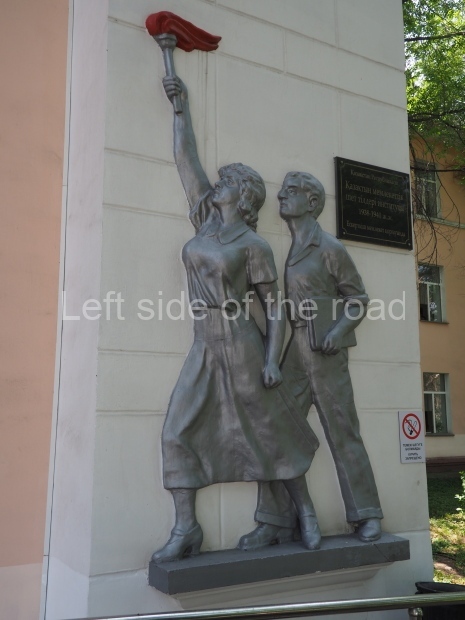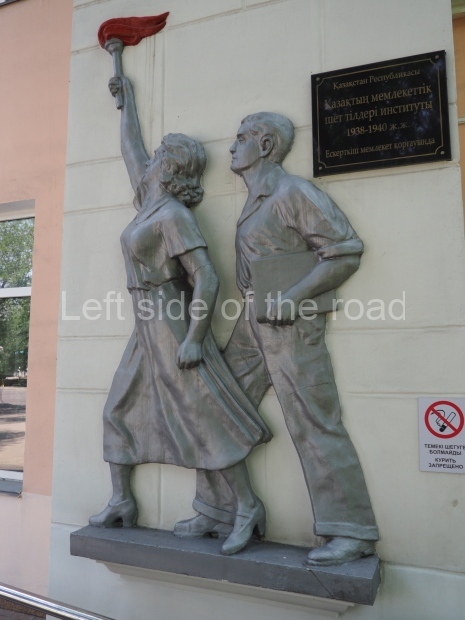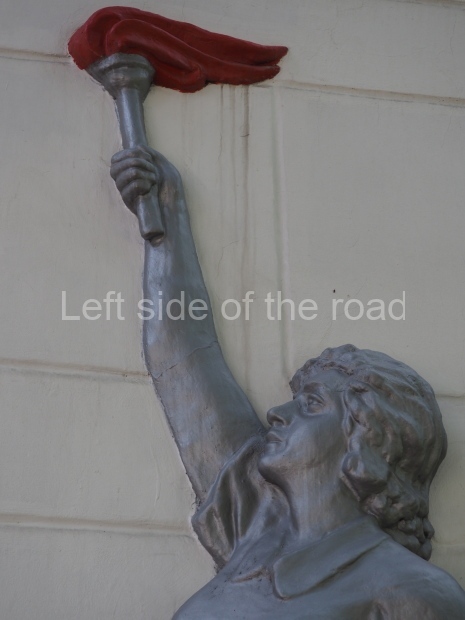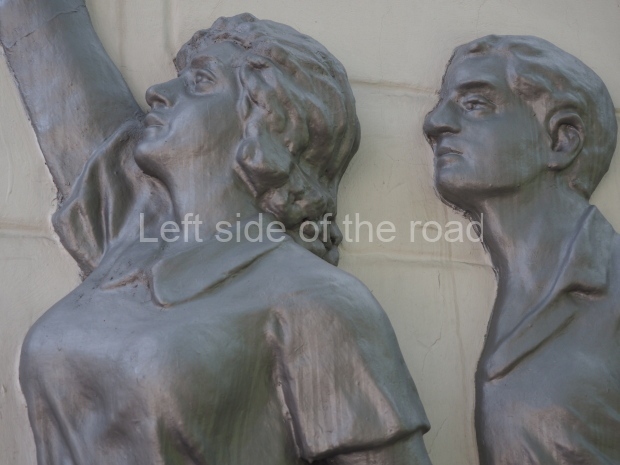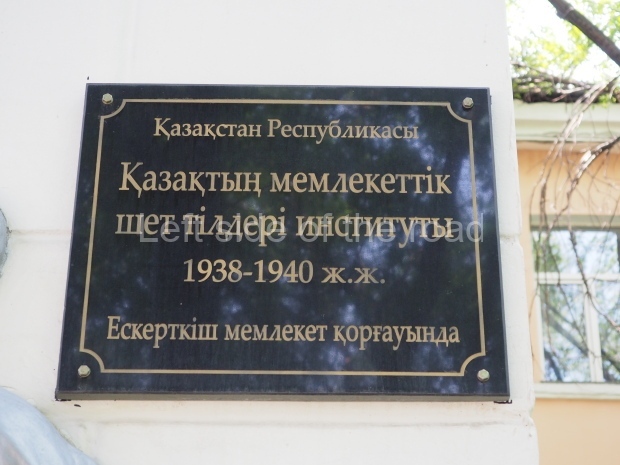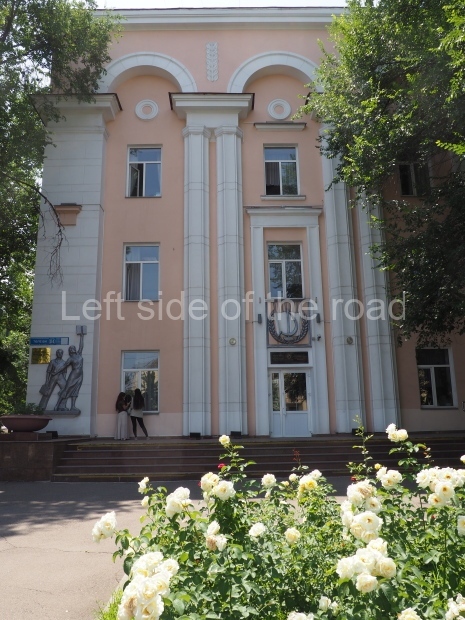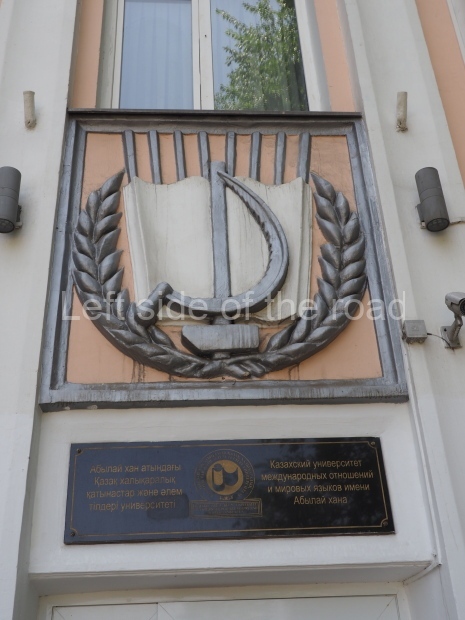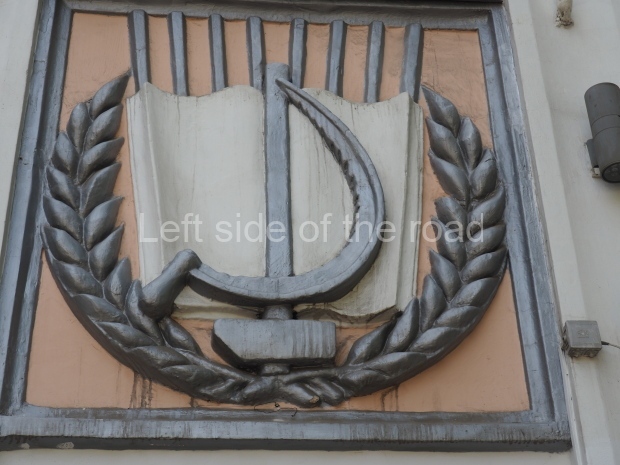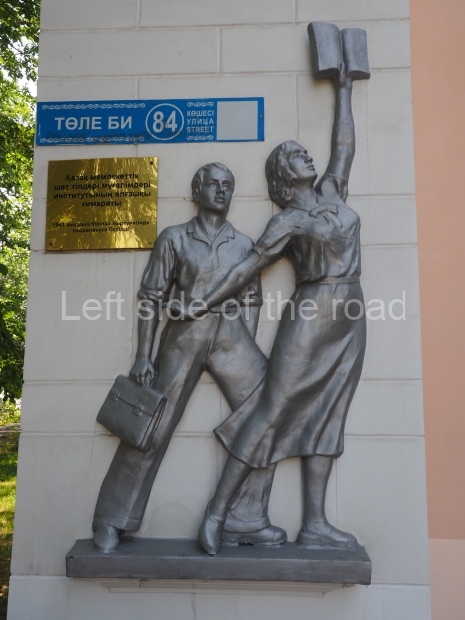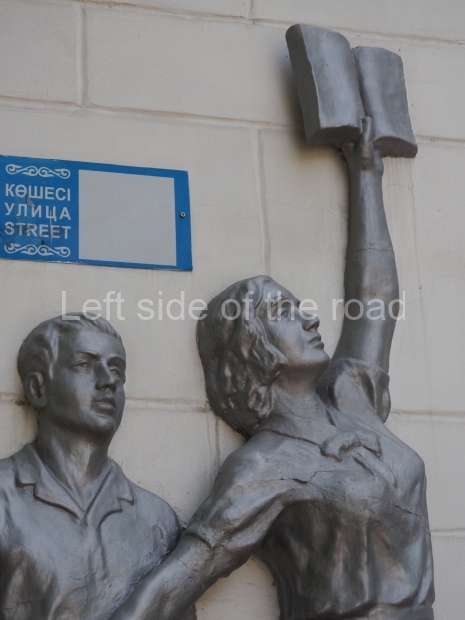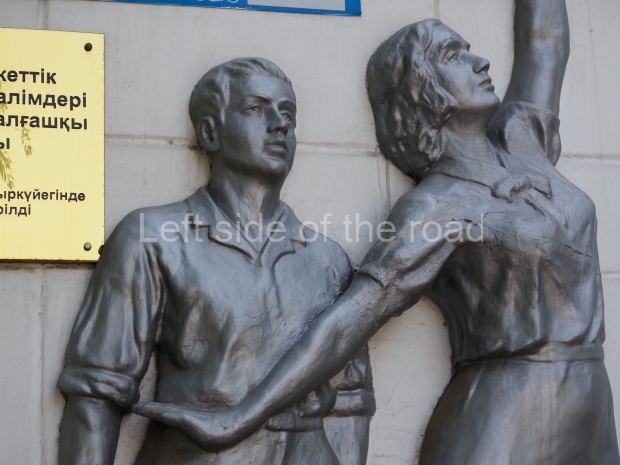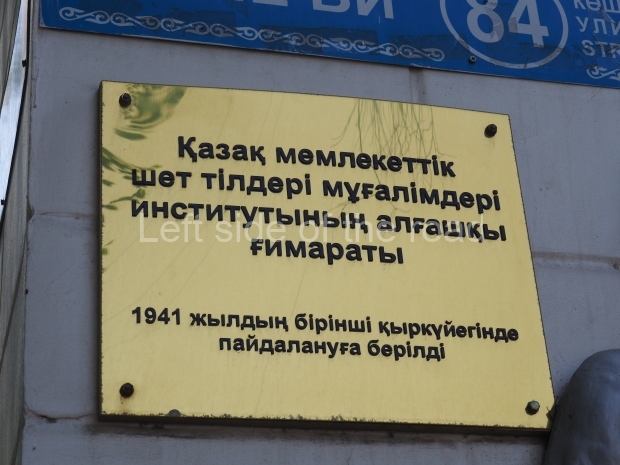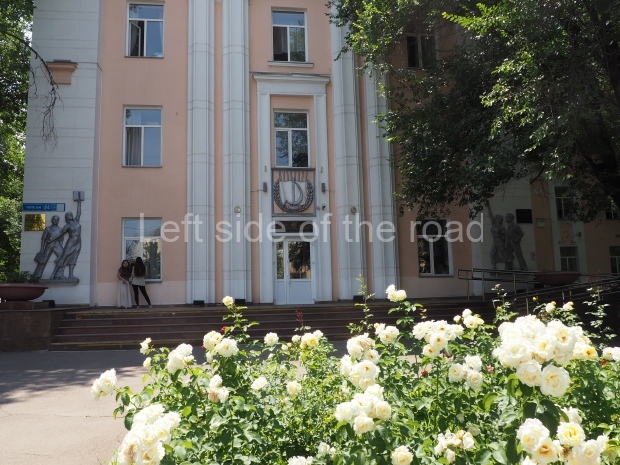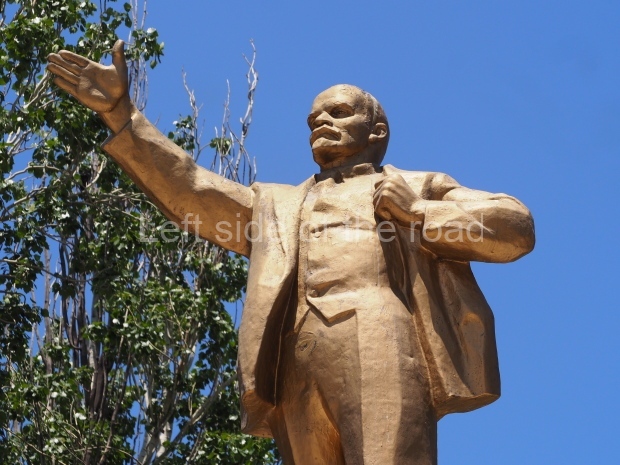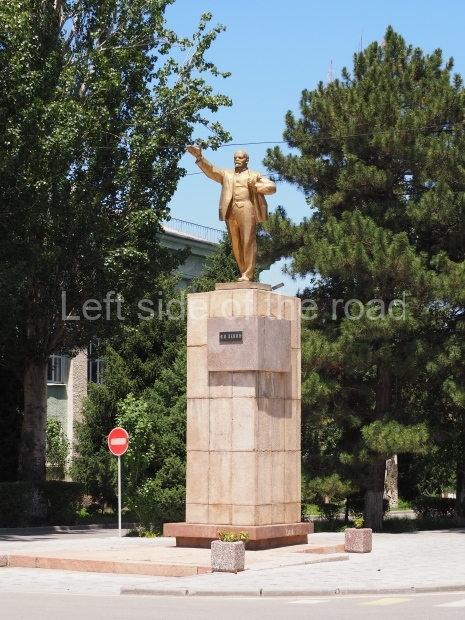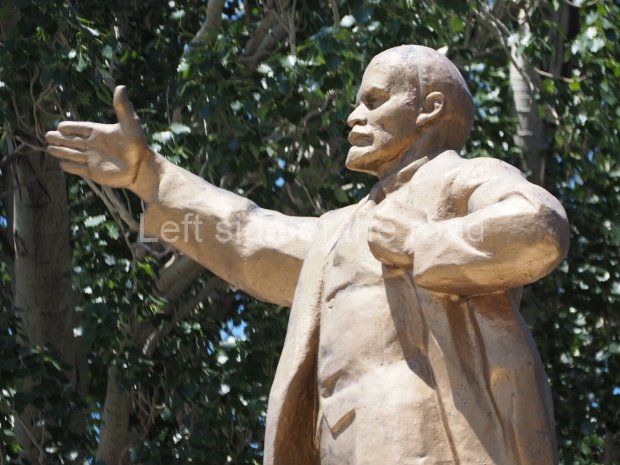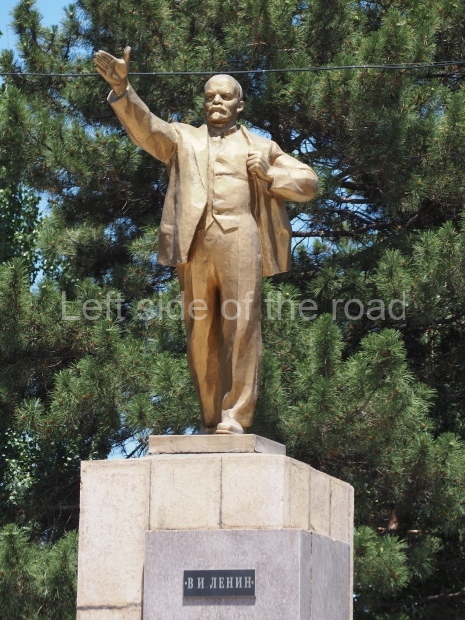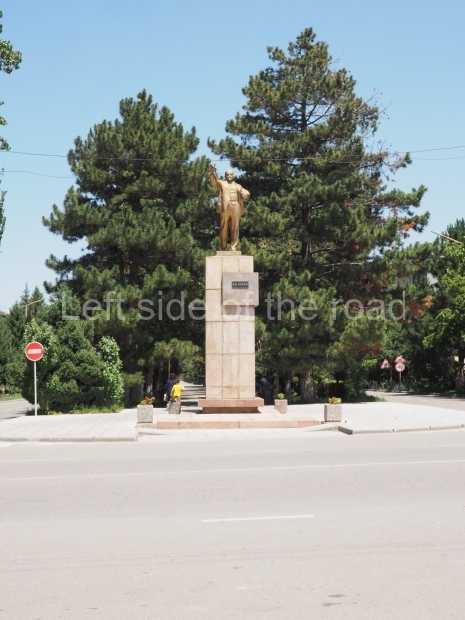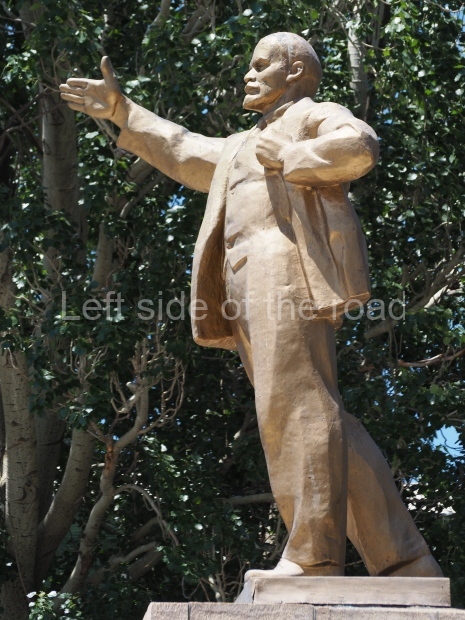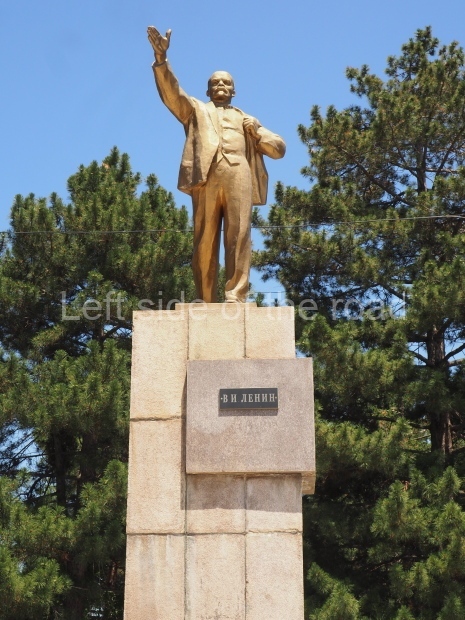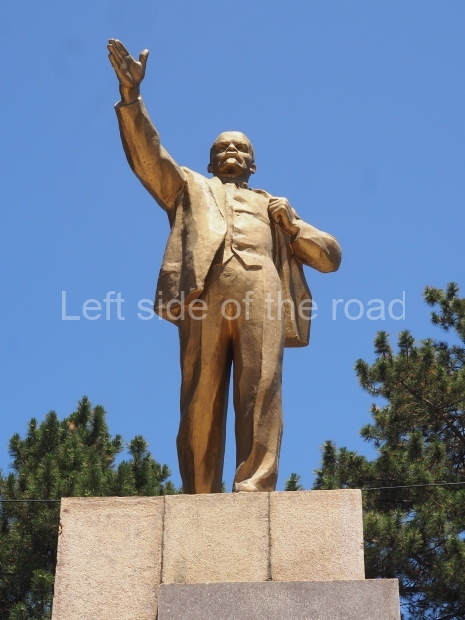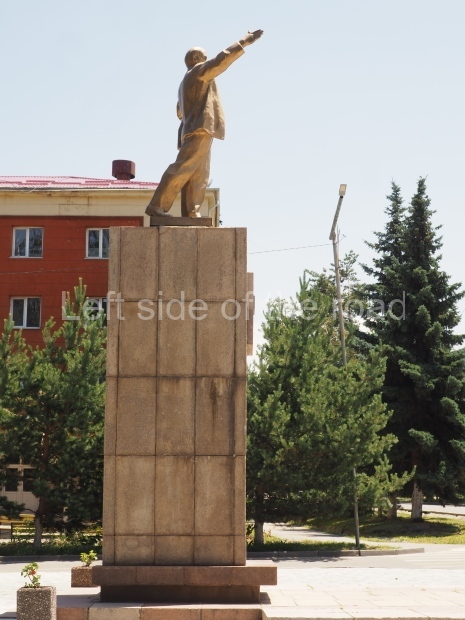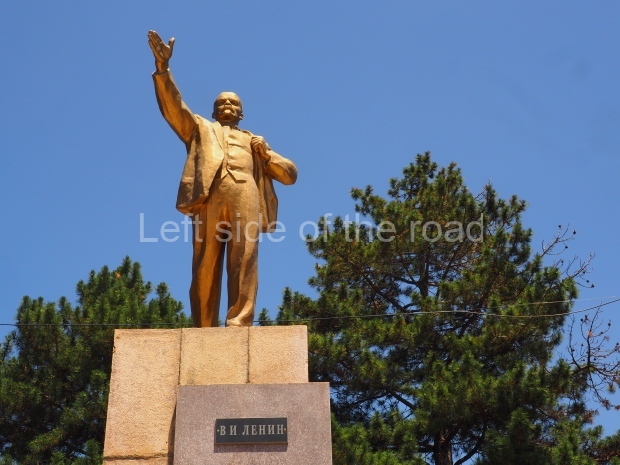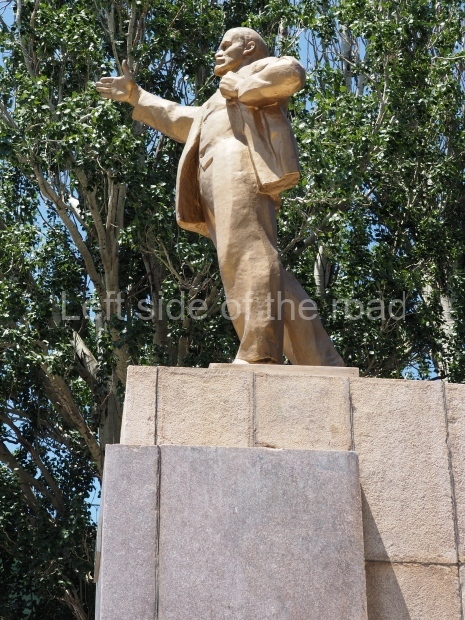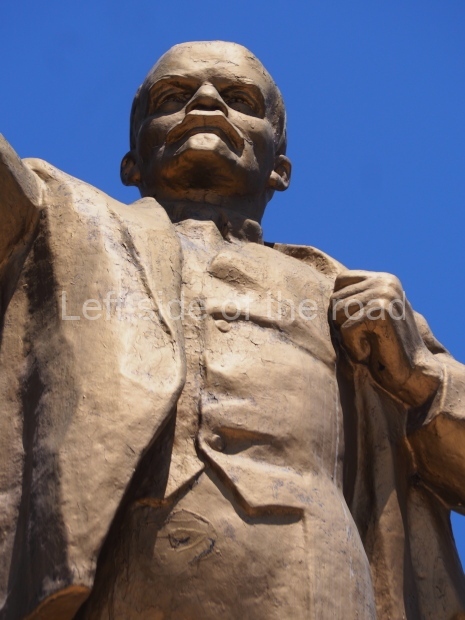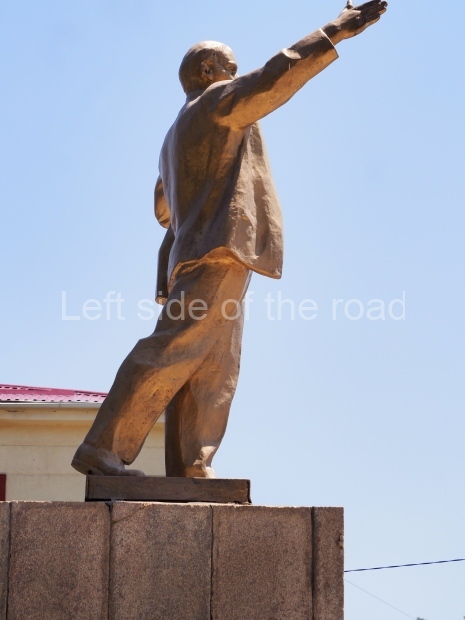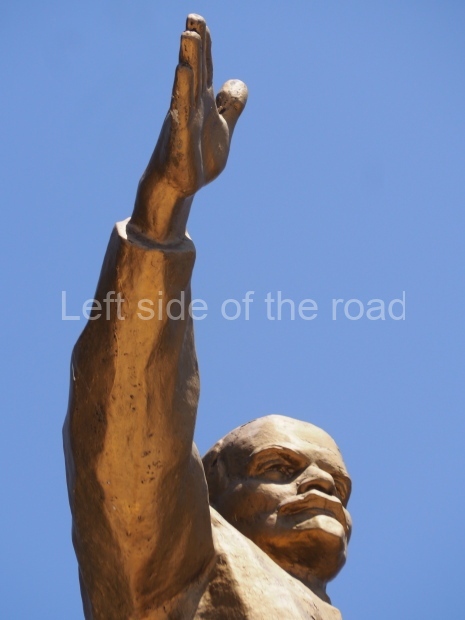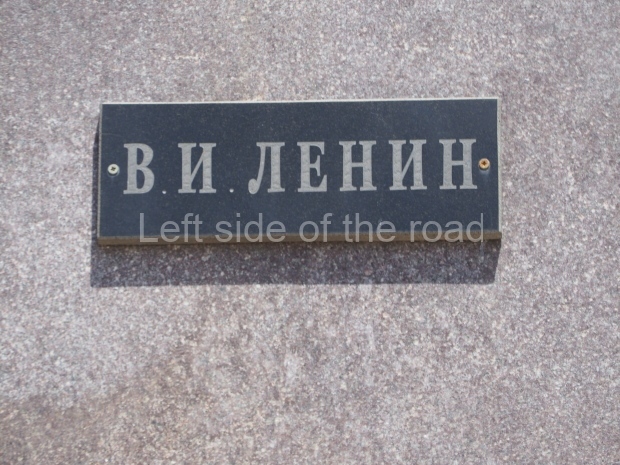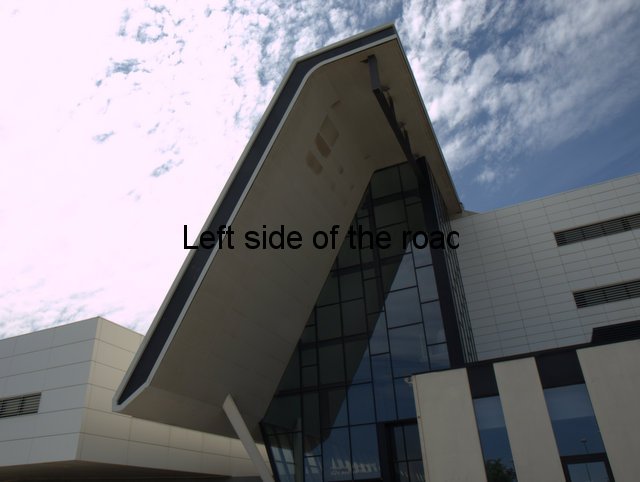Kazakhskiy University – Almaty – Socialist bas reliefs
This is a (relatively) unique example of Soviet art in Kazakhstan for a number of unrelated reasons;
this was the only such example that I came across in my travels in the summer of 2025, not just in Kazakhstan but in Kyrgyzstan and Uzbekistan;
it has obviously been looked after and any repainting and renovation has been carried out with care and consideration;
it is unusual that in the images on both sides of the entrance to the building it is the women who are playing the leading role – it’s normally shared by the genders;
the Hammer and Sickle is in a central and therefore important location but it is depicted in a form that is unusual (although not, I think, unique as I am sure I’ve seen such a representation but – unfortunately – can’t remember where). Here, in place of the shaft of the hammer crossing the blade of the sickle, the back edge of the sickle rests on the head of the hammer and its shaft touches the tip of the sickle’s blade. I cannot think of a reason for this inversion of the hammer, especially as this is at the entrance of an educational establishment. However, the laurel leaves (representing achievement and success) cradle the symbol of the agricultural and industrial workers;
both the women are striving high in their respective endeavours. The one holding the flaming torch (the flame of which is painted red) is promoting – and striving for – technology, knowledge and civilisation, but here a civilisation based on a newer and finer ethic, that of Socialism and internationalism. The woman stretching to her utmost so that her book is as high as possible represents learning, literacy (an always primary goal of any society with a Socialist aspiration) and the acquisition of knowledge in general.
These images are now at the edge of a much bigger educational complex than it would have been in the immediate pre-Great Patriotic War period but it is good to see that there are some people in a position of authority to ensure that this important aspect of Kazakh history and culture is preserved and respected.
The black plaque notes that this was the Kazakh State Institute of Foreign Languages, 1938-1940. I assume that was the period it took to build the complex as the Soviet Union always – even in its revisionist manifestation – placed great importance on the country having people with an excellent understanding of many of the world’s languages.
The gold plaque states that the building was completed and opened on 1st September 1941.
This is now quite a large complex but the learning, and teaching, of foreign languages does not seem to have the same importance in capitalist Kazakhstan as it did in the Soviet Union. Presently the building is used for a whole variety of subjects – including the ubiquitous business/management’ courses (which will lead students into debt and then into a dead end ‘start-up’, in the vast majority of circumstances).
Location;
Tole Bi Street 84, Almaty
GPS;
43.253986 N
76.936108 E


